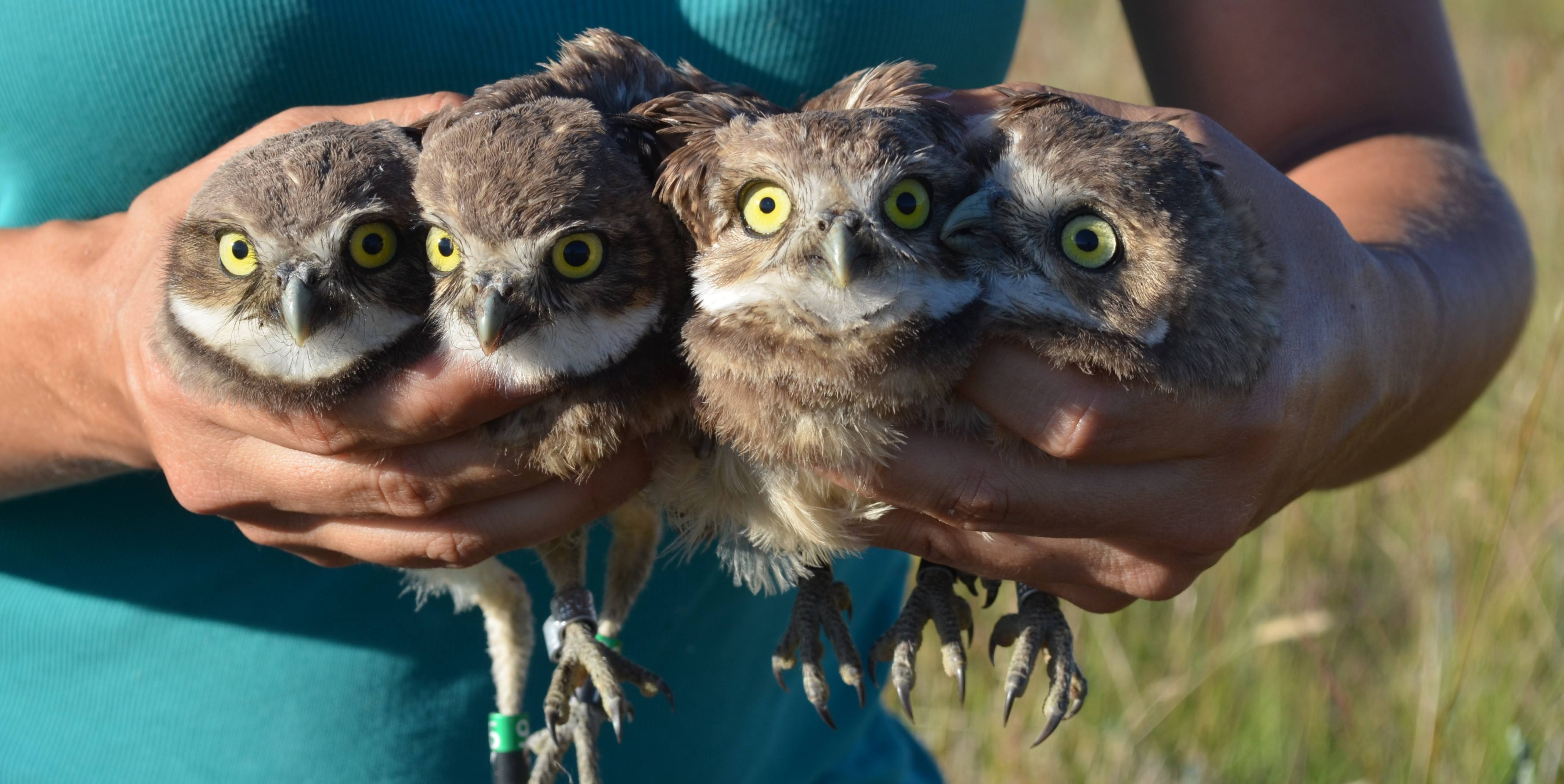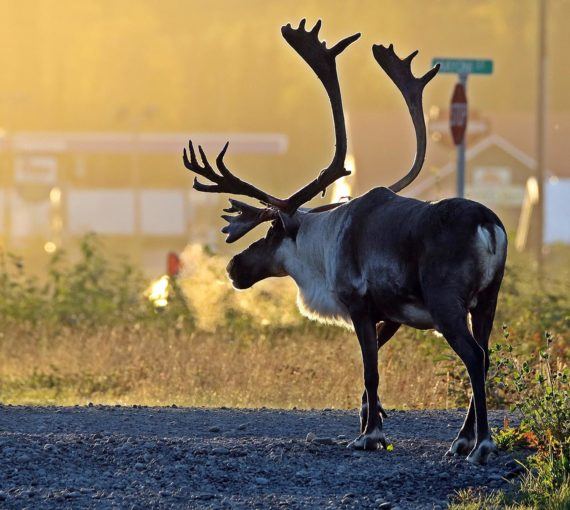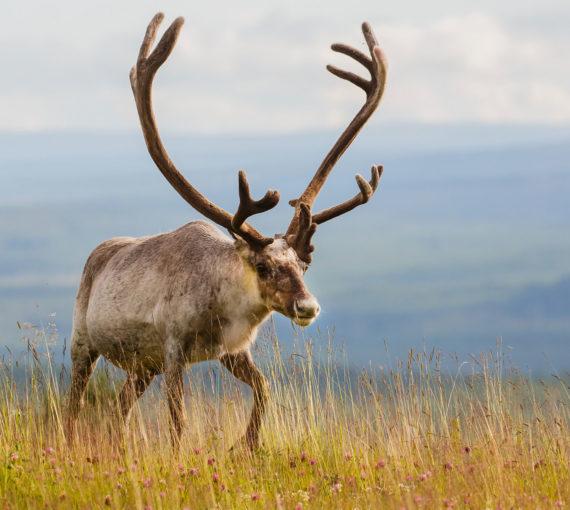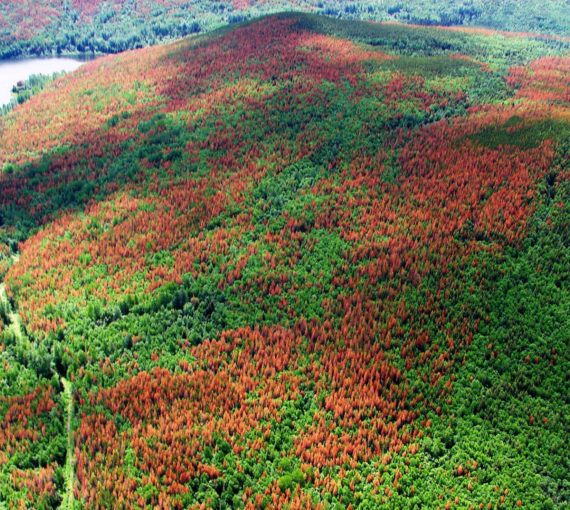
The Burrowing Owl Conservation Society of B.C. protects and enhances burrowing owl habitat through stewardship programs with landowners and First Nations. (Photo: Burrowing Owl Conservation Society of B.C.)
B.C. is spending hundreds of thousands of dollars on a captive breeding program to protect spotted owls. With an estimated six of the owls left in the wild in Canada, all in B.C., that seems like good news. But while the program includes some habitat protection, the province is also approving logging in habitat the owl needs to survive.
It’s a major flaw in government-led conservation efforts. Stories of captive breeding programs that lead to successful animal re-introduction are happy, but they’re often born out of sad stories about the animals’ plight.
Captive breeding programs are last-ditch efforts to save animals after humans have degraded or destroyed their habitat to the point where it’s difficult for them to survive. In almost every case, experts and regulators are aware of the species’ decline and the reasons behind it, but calls for habitat conservation go unheeded, or efforts are inadequate to ensure the animals can continue.
Species don’t disappear overnight. Activities that degrade and destroy habitat are allowed to continue until a species is driven to point where it can no longer function in the wild and needs human help.
Conservation would work better if land-use management regimes focused on maintaining habitat wildlife needs to survive before it’s too late. Instead, we wait until tipping points have been passed and then scramble to capture animals for breeding.
When humans handle wildlife over generations, animals can become semi-domesticated and lose intergenerational knowledge about survival in nature.
Captive breeding itself is often controversial, riddled with risks. When humans handle wildlife over generations, animals can become semi-domesticated and lose intergenerational knowledge about survival in nature. Once they’re re-introduced into the wild, many don’t make it.
The odds of captured predators such as tigers and wolves surviving freedom are only 33 per cent, according to recent research, and studies show captive-bred animals are more likely to interact and mate with other captive-bred animals and lose their ability to communicate with wild peers. Another study concluded captive-bred animals may develop behavioural changes such as “decrease in predator avoidance, decrease in foraging abilities, increase in sleeping patterns, decrease in overall activity, and some problems in social behaviors.”
The intergenerational effects are biological as well as cultural. One study showed captive breeding can result in genetic changes between captive and wild lineages, and confinement can make animals more susceptible to disease outbreaks. (A tragic lion-breeding program resulted in the deaths of nearly two dozen “struck by a mysterious disease aggravated by inbreeding and a weakened gene pool.”)
The main issue is the risk of releasing captive-bred wildlife into degraded habitat that couldn’t support it in the first place. Most examples of successful endangered species recovery involve animals facing threats other than habitat loss. Eagles were declining because of DDT contamination until it was banned. Condors were being poisoned by lead in the bodies of the carrion they ate until lead shot was limited.
The Burrowing Owl Conservation Society of B.C., which takes an active approach to protecting and enhancing burrowing owl habitat through stewardship programs with landowners and First Nations.
Some programs pair captive breeding with habitat restoration, such as one run by the Burrowing Owl Conservation Society of B.C., which takes an active approach to protecting and enhancing burrowing owl habitat through stewardship programs with landowners and First Nations. The burrowing owl is listed as endangered by the federal government, which says populations in Canada declined by 90 per cent from 1990 to 2000 and a further 643 per cent between 2005 and 2015. The grasslands it and many other species depend on have been all but wiped out by agriculture and development.
As with the spotted owl case and others, most captive breeding programs omit or fail to adequately address the crucial habitat part of the recovery equation. Boreal woodland caribou are being penned in Alberta and British Columbia while status quo oil and gas and logging operations continue to fragment their forest habitat. The provinces are also killing predators such as wolves and competitors such as barred owls as part of recovery initiatives for caribou and spotted owls — a stopgap solution.
Unless captive breeding programs are combined with meaningful habitat protection and restoration initiatives, efforts will be more about show than success.
For the sake of animals taken from the wild, and for staff and volunteers who spend countless hours nurturing wildlife from birth to releasable ages, we must demand that governments work to repair destroyed and fragmented habitat driving many species to the brink.



